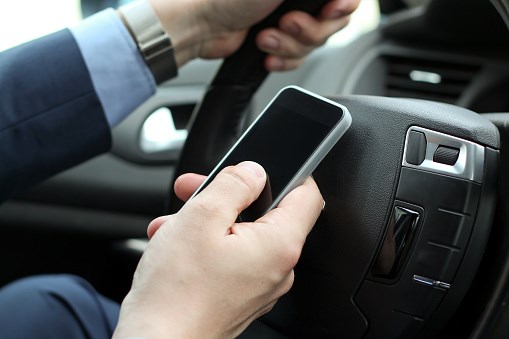Cpl. Craig Douglass has seen some head-scratching, eyebrow-raising examples of suspect driving behaviour in his career as an RCMP officer.
One of the most baffling sights happened one day while he was driving on a B.C. highway.
He saw a man driving who appeared thoroughly engrossed in reading a book.
Unfortunately at the time, Douglass was not in a position to pull the driver over. But if he was, there's no doubt he would have thrown the book at him.
"I've seen it, and it blows me away, I don't know how you can focus on reading a novel and on the road at the same time," said Douglass. "Even if you're stopped at a red light, you have to be focused on the road. You can't be focused on reading a newspaper."
Fines for distracted driving start at $368 with an automatic four demerit points added to the driver's record. The fine for using any kind of electronic device while driving is the same as it is for emailing or texting while driving. Fines increase for mutiple infractions.
"If you're not paying attention, well be prepared," said Douglass, a Prince George RCMP spokesman. "The key message from police would be, focus on the road while you're driving. If you stop focusing on that for whatever reason, then you're distracted, and it's something you can get a fine for.
"If you're using two hands to eat something and using your knee, that's distracted driving, and it could be driving without due care and attention, depending on the result. It's not just a cell phone thing."
The RCMP lists other examples of distracted driving as: talking or texting with a mobile device, programming a global positioning system (GPS) navigation device, watching videos, eating and drinking, smoking or vaping, grooming, adjusting the radio, listening to extremely loud music, or talking to passengers.
On New Year's Eve a woman in Saanich was issued a distracted driving ticket for changing the song on her dash-mounted cell phone while she was driving. In a statement, Saanich Police said drivers are only allowed to touch a mounted cell phone to answer or end a call.
"Obviously there's what happens and what we can prove," said Douglass. "But there are a lot of people out there with dash cams and all kinds of things out there that provide us with information that help our investigations."
Douglass says you won't get pulled over for drinking as cup of coffee while you drive.
"Really, that's not causing death on the road," said Douglass. Whereas screens are, liquor does and drugs do. Those are our focuses, we're not trying to stop people from drinking coffee. But if both hands are off the wheel and you get into a collision, then you're responsible for that.
"You see it online where they're driving and filming someone else doing something wrong."
Drivers can use their phones while the wheel are in motion if they are equipped for hands-free operation. They can use hand-held electronic devices from their vehicles as long as they are legally parked on a roadway which allows parking on on a highway pullout. It's not OK to pull over on the side of a highway on the shoulder just to use a phone.
The prohibition on electronic devices, which also includes computer screens, does not apply to emergency personnel such as police, ambulance operators and fire services staff. A driver is allowed to call or message details of an emergency to a police force, fire department or ambulance while driving. There are are also exceptions to a prescribed class of people who use electronic devices during the course of their duties.
If you see a hazardous driver swerving or driving erratically, the RCMP recommends pulling over to the side of the road and activating hazard lights before making a 9-1-1 call. If you spot someone using a phone while driving who is not displaying dangerous driving behaviour, call the non-emergency police line to report it. Do not call 9-1-1.
The likelihood of using a phone while driving can be reduced if drivers plan their route ahead of time and use the GPS feature that calls out audible commands to identify upcoming turns. Keep your phone out of sight with the ring volume turned down. Avoid eating and drinking while driving and keep radio at a reasonable volume so you can hear sirens and detect other hazards. Don't use headphones while driving.
It's not OK to apply makeup, shave, use skin creams or brush your teeth while driving. Make sure objects in the vehicle are secure so they don't flying when the brakes are suddenly applied.
Fatigue is another cause of distracted driving and can be avoided by getting enough sleep the night before a long highway trip. If possible, switch drivers every few hours to stay alert. Don't schedule trips during your usual wake-up and bed times. Drive in the daylight hours as much as possible and travel with someone to help keep you alert.



